
Beautiful South Pacific coral reef, with gorgonian sea fans, schooling anthias fish and colorful dendronephthya soft corals, Fiji.
Species: Anthias, Dendronephthya soft coral, Gorgonian, Dendronephthya, Gorgonacea, Pseudanthias
Location: Fiji
Image ID: 31341
Species: Anthias, Dendronephthya soft coral, Gorgonian, Dendronephthya, Gorgonacea, Pseudanthias
Location: Fiji
Image ID: 31341

Three giant black sea bass, gathering in a mating/courtship aggregation amid kelp forest at Catalina Island. In summer months, black seabass gather in kelp forests in California to form mating aggregations. Courtship behaviors include circling of pairs of giant sea bass, production of booming sounds by presumed males, and nudging of females by males in what is though to be an effort to encourage spawning.
Species: Giant black sea bass, Stereolepis gigas
Location: Catalina Island, California
Image ID: 33355
Species: Giant black sea bass, Stereolepis gigas
Location: Catalina Island, California
Image ID: 33355

Giant Black Sea Bass with Unique Pattern of Black Spots at Catalina Island. The giant sea bass is an endangered species reaching up to 8' in length and 500 lbs, amid giant kelp forest.
Species: Giant black sea bass, Stereolepis gigas
Location: Catalina Island, California
Image ID: 33356
Species: Giant black sea bass, Stereolepis gigas
Location: Catalina Island, California
Image ID: 33356
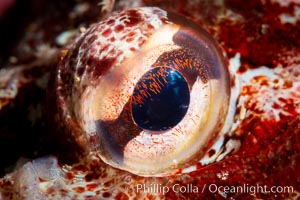
Red Irish Lord eye detail, Browning Pass, British Columbia.
Species: Red irish lord, Hemilepidotus hemilepidotus
Location: British Columbia, Canada
Image ID: 35269
Species: Red irish lord, Hemilepidotus hemilepidotus
Location: British Columbia, Canada
Image ID: 35269

Giant Manta Ray at Socorro Island, Revillagigedos, Mexico.
Species: Giant manta ray, Manta birostris
Location: Socorro Island (Islas Revillagigedos), Baja California, Mexico
Image ID: 33291
Species: Giant manta ray, Manta birostris
Location: Socorro Island (Islas Revillagigedos), Baja California, Mexico
Image ID: 33291
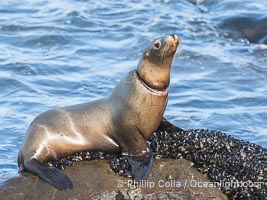
California sea lion entangled in fishing line, deep laceration around neck, Point La Jolla.
Species: California sea lion, Zalophus californianus
Location: La Jolla, California
Image ID: 40486
Species: California sea lion, Zalophus californianus
Location: La Jolla, California
Image ID: 40486

Ocean sunfish and freediving photographer, open ocean.
Species: Ocean sunfish, Mola mola
Location: San Diego, California
Image ID: 03325
Species: Ocean sunfish, Mola mola
Location: San Diego, California
Image ID: 03325

Blue shark and yellowtail in the open ocean.
Species: North pacific yellowtail, Yellowtail, Kingfish, Prionace glauca, Seriola lalandi
Location: San Diego, California
Image ID: 01000
Species: North pacific yellowtail, Yellowtail, Kingfish, Prionace glauca, Seriola lalandi
Location: San Diego, California
Image ID: 01000
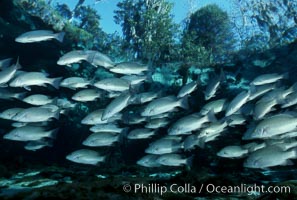
Mangrove snapper schooling in the clear waters of Crystal River, with trees in the background.
Species: Mangrove snapper, Lutjanus griseus
Location: Three Sisters Springs, Crystal River, Florida
Image ID: 02688
Species: Mangrove snapper, Lutjanus griseus
Location: Three Sisters Springs, Crystal River, Florida
Image ID: 02688

Ocean sunfish reflected on a glassy surface in bluewater, open ocean, southern California.
Species: Ocean sunfish, Mola mola
Location: San Diego, California
Image ID: 02413
Species: Ocean sunfish, Mola mola
Location: San Diego, California
Image ID: 02413

The leafy seadragon (Phycodurus eques) is found on the southern and western coasts of Australia. Its extravagent appendages serve only for camoflage, since it has a nearly-invisible dorsal fin that propels it slowly through the water. The leafy sea dragon is the marine emblem of South Australia.
Species: Leafy seadragon, Phycodurus eques
Location: Rapid Bay Jetty, South Australia
Image ID: 39134
Species: Leafy seadragon, Phycodurus eques
Location: Rapid Bay Jetty, South Australia
Image ID: 39134

California sea lion watches an ocean sunfish, Mola mola, on drift kelp paddy, underwater. This adult female California sea lion was hanging out underneath a paddy of drift kelp, well offshore the coastline of San Diego.
Species: Ocean sunfish, California sea lion, Mola mola, Zalophus californianus
Location: San Diego, California
Image ID: 38536
Species: Ocean sunfish, California sea lion, Mola mola, Zalophus californianus
Location: San Diego, California
Image ID: 38536

Beautiful South Pacific coral reef, with gorgonian sea fans, schooling anthias fish and colorful dendronephthya soft corals, Fiji.
Species: Anthias, Dendronephthya soft coral, Gorgonian, Dendronephthya, Gorgonacea, Pseudanthias
Location: Vatu I Ra Passage, Bligh Waters, Viti Levu Island, Fiji
Image ID: 31330
Species: Anthias, Dendronephthya soft coral, Gorgonian, Dendronephthya, Gorgonacea, Pseudanthias
Location: Vatu I Ra Passage, Bligh Waters, Viti Levu Island, Fiji
Image ID: 31330

King angelfish in the Sea of Cortez, Mexico.
Species: King angelfish, Holacanthus passer
Location: Sea of Cortez, Baja California, Mexico
Image ID: 27470
Species: King angelfish, Holacanthus passer
Location: Sea of Cortez, Baja California, Mexico
Image ID: 27470
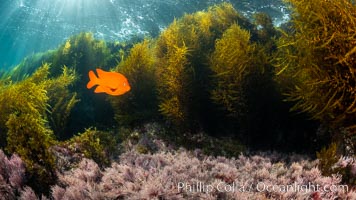
Garibaldi and Marine Algae, Coronado Islands, Mexico.
Location: Coronado Islands (Islas Coronado), Baja California, Mexico
Image ID: 36490
Location: Coronado Islands (Islas Coronado), Baja California, Mexico
Image ID: 36490

Spectacular pristine tropical reef with vibrant colorful soft corals. Dendronephthya soft corals, crinoids, sea fan gorgonians and schooling Anthias fishes, pulsing with life in a strong current over a pristine coral reef. Fiji is known as the soft coral capitlal of the world.
Species: Anthias, Crinoid feather star, Dendronephthya soft coral, Gorgonian, Crinoidea, Dendronephthya, Gorgonacea, Pseudanthias
Location: Vatu I Ra Passage, Bligh Waters, Viti Levu Island, Fiji
Image ID: 31367
Species: Anthias, Crinoid feather star, Dendronephthya soft coral, Gorgonian, Crinoidea, Dendronephthya, Gorgonacea, Pseudanthias
Location: Vatu I Ra Passage, Bligh Waters, Viti Levu Island, Fiji
Image ID: 31367

Salema schooling amid kelp forest.
Species: Salema, Macrocystis pyrifera, Xenistius californiensis
Location: Catalina Island, California
Image ID: 01022
Species: Salema, Macrocystis pyrifera, Xenistius californiensis
Location: Catalina Island, California
Image ID: 01022

Juvenile garibaldi in motion.
Species: Garibaldi, Hypsypops rubicundus
Location: Catalina Island, California
Image ID: 02343
Species: Garibaldi, Hypsypops rubicundus
Location: Catalina Island, California
Image ID: 02343

Kelp fronds and pneumatocysts. Pneumatocysts, gas-filled bladders, float the kelp off the ocean bottom toward the surface and sunlight, where the leaf-like blades and stipes of the kelp plant grow fastest. Catalina Island, California.
Species: Giant kelp, Macrocystis pyrifera
Location: Catalina Island, California
Image ID: 37282
Species: Giant kelp, Macrocystis pyrifera
Location: Catalina Island, California
Image ID: 37282

Parasitic zoanthid anemones cover and encrust and overwhelm a golden gorgonian, Catalina Head.
Species: Luminescent parazoanthid, Zoanthid anemone, Parazoanthus lucificum, Savalia lucifica
Location: Catalina Island, California
Image ID: 37294
Species: Luminescent parazoanthid, Zoanthid anemone, Parazoanthus lucificum, Savalia lucifica
Location: Catalina Island, California
Image ID: 37294

Dorsal and Caudal fins of the Ocean Sunfish Mola mola, as it Swims in the Open Ocean, near San Diego. The caudal fin is not a true tail but is a tail-like structure called a clavus that serves as a rudder. The dorsal (top) and anal (bottom) fins are used for propulsion.
Species: Ocean sunfish, Mola mola
Location: San Diego, California
Image ID: 39407
Species: Ocean sunfish, Mola mola
Location: San Diego, California
Image ID: 39407

Freckled Hawkfish (Black-sided Hawkfish), Paracirrhites forsteri, Fiji.
Species: Blackside hawkfish, Paracirrhites forsteri
Location: Makogai Island, Lomaiviti Archipelago, Fiji
Image ID: 31347
Species: Blackside hawkfish, Paracirrhites forsteri
Location: Makogai Island, Lomaiviti Archipelago, Fiji
Image ID: 31347

Humpnose Bigeye Bream, Monotaxis grandoculis, Fiji.
Location: Makogai Island, Lomaiviti Archipelago, Fiji
Image ID: 31348
Location: Makogai Island, Lomaiviti Archipelago, Fiji
Image ID: 31348
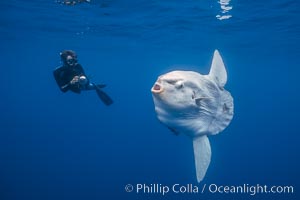
Ocean sunfish and photographer, open ocean.
Species: Ocean sunfish, Mola mola
Location: San Diego, California
Image ID: 03324
Species: Ocean sunfish, Mola mola
Location: San Diego, California
Image ID: 03324

Arc-eye Hawkfish, Paracirrhites arcatus, Fiji.
Species: Arc eye hawkfish, Paracirrhites arcatus
Location: Namena Marine Reserve, Namena Island, Fiji
Image ID: 34784
Species: Arc eye hawkfish, Paracirrhites arcatus
Location: Namena Marine Reserve, Namena Island, Fiji
Image ID: 34784

Ring-tailed cardinal fish, Male tending eggs in his mouth, Ostorhinchus aureus, Fiji.
Species: Ring tailed cardinalfish, Ostorhinchus aureus
Location: Namena Marine Reserve, Namena Island, Fiji
Image ID: 34786
Species: Ring tailed cardinalfish, Ostorhinchus aureus
Location: Namena Marine Reserve, Namena Island, Fiji
Image ID: 34786
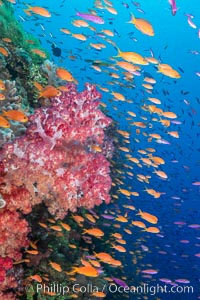
Brilliantlly colorful coral reef, with swarms of anthias fishes and soft corals, Fiji.
Species: Anthias, Dendronephthya soft coral, Dendronephthya, Pseudanthias
Location: Bligh Waters, Fiji
Image ID: 34795
Species: Anthias, Dendronephthya soft coral, Dendronephthya, Pseudanthias
Location: Bligh Waters, Fiji
Image ID: 34795
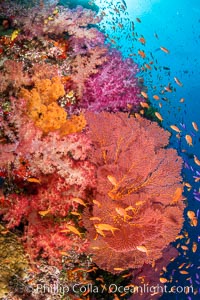
Beautiful South Pacific coral reef, with Plexauridae sea fans, schooling anthias fish and colorful dendronephthya soft corals, Fiji.
Species: Anthias, Dendronephthya soft coral, Gorgonian, Dendronephthya, Gorgonacea, Pseudanthias
Location: Fiji
Image ID: 34803
Species: Anthias, Dendronephthya soft coral, Gorgonian, Dendronephthya, Gorgonacea, Pseudanthias
Location: Fiji
Image ID: 34803

Brilliantlly colorful coral reef, with swarms of anthias fishes and soft corals, Fiji.
Species: Anthias, Dendronephthya soft coral, Gorgonian, Dendronephthya, Gorgonacea, Pseudanthias
Location: Fiji
Image ID: 34805
Species: Anthias, Dendronephthya soft coral, Gorgonian, Dendronephthya, Gorgonacea, Pseudanthias
Location: Fiji
Image ID: 34805

Beautiful South Pacific coral reef, with Plexauridae sea fans, schooling anthias fish and colorful dendronephthya soft corals, Fiji.
Species: Anthias, Dendronephthya soft coral, Gorgonian, Dendronephthya, Gorgonacea, Pseudanthias
Location: Fiji
Image ID: 34807
Species: Anthias, Dendronephthya soft coral, Gorgonian, Dendronephthya, Gorgonacea, Pseudanthias
Location: Fiji
Image ID: 34807